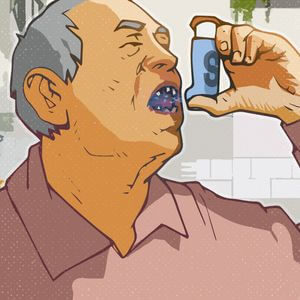Candida albicans

White as snow
Yeasts of the Candida genus include a number of species including Candida albicans which takes its name from the whitish appearance of its colonies (from Latin “alba” which means white). Yeasts contain pathogenic species such as Candida albicans and non-pathogenic species such as baker’s yeast, Saccharomyces cerevisiae.
Opportunistic yeast
Candida albicans is the cause of so-called opportunistic infections since they generally occur in patients with risk factors facilitating colonization and / or invasion by these yeasts. Risk factors include antibiotic treatment, immunosuppressive therapy, diabetes, complex abdominal surgery or the use of intravascular catheters. These various factors cause an imbalance between the Candida and the host either through the presence of breaches (catheters, surgery), or due to a relative immunosuppression or a change in the microbial flora that colonizes us.
In general, these yeasts of the Candida genus colonize our digestive tract. Candida also colonizes the skin where the number of yeasts can increase in the presence of humidity (in the folds, for example) or in the presence of foreign bodies (catheters). Finally, Candida albicans also colonizes the vaginal mucosa.
From thrush to disseminated mycosis
The disease can be local (oral thrush or vaginal candidiasis, for example) or disseminated.
Oral involvement occurs primarily in diabetic patients or in patients with asthma, who use sprays containing steroids. Thrush sometimes manifests itself as a change in taste or a feeling of dry mouth. Vaginal involvement can cause a white discharge. The disseminated disease, with a severe prognosis, is mainly observed in patients with strong immunosuppression, for example people with neutropenia1 following cancer chemotherapy.
Recently, the resistance to certain antifungal drugs (eg fluconazole) has grown following the intensive use of certain antifungals in agriculture.

- Black cards
- Akkermancia muciniphila
- Aspergillus fumigatus
- Bifidobacterium
- Candida albicans
- Chlamydia trachomatis
- Clostrioides difficile
- HBV
- HPV
- Human immunodeficiency virus
- Klebsiella pneumoniae
- Lactobacille
- Leishmania
- Leptospira interrogans
- Neisseria meningitidis
- Mumps virus
- Streptococcus pneumoniae
- Rickettsia prowazekii
- Measles virus
- Rubella
- Toxoplasma gondii
- Treponema palidum
- Chickenpox virus
- Vibrio cholera
- Zikavirus
